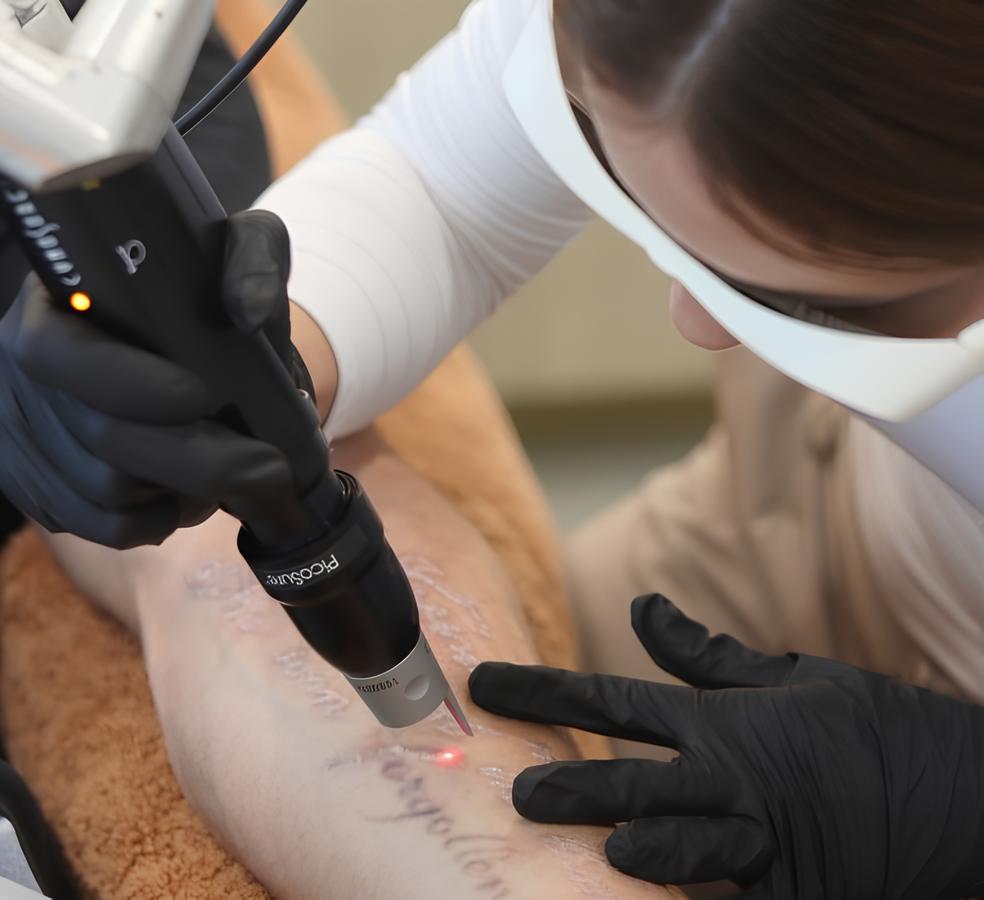Danyal Malik's blog : Laser Tattoo Removal Process What to Expect

Tattoo removal has become increasingly popular, especially in a bustling metropolis like Dubai. As more people seek to erase or alter their tattoos, understanding the Tattoo Removal in Dubai process is crucial. This comprehensive guide will walk you through what to expect during each phase of the laser tattoo removal journey.
Understanding the Basics of Laser Tattoo Removal
Laser tattoo removal is a non-invasive procedure designed to break down tattoo pigments using high-intensity light. This process involves several key steps and requires specialized equipment and expertise. It’s a preferred method for many seeking tattoo removal in Dubai due to its effectiveness and relatively low risk.
How Laser Tattoo Removal Works
The laser removal process involves directing focused laser light at the tattooed skin. The light energy is absorbed by the ink pigments, causing them to break into smaller fragments. These fragments are then gradually eliminated by the body's immune system. Different types of lasers target various ink colors and depths, making it a versatile option for removing a wide range of tattoos.
Types of Lasers Used
Several types of lasers are used for tattoo removal, each designed to target specific colors and depths of ink:
Q-Switched Lasers: These are the most commonly used lasers for tattoo removal. They emit short bursts of high-energy light, effectively breaking down tattoo pigments.
Nd Lasers: Effective for darker colors such as black and blue, these lasers penetrate deeper into the skin and are often used for more stubborn tattoos.
PicoSure Lasers: Known for their ultra-short pulses, PicoSure lasers are highly effective for breaking down ink particles and reducing the number of sessions required.
Preparing for Your Laser Tattoo Removal Session
Before your first session, proper preparation is essential for achieving the best results. Here’s what you should consider:
Consultation and Assessment
A thorough consultation with a professional is the first step. During this assessment, the practitioner will evaluate the tattoo's size, color, and depth, and discuss your medical history to ensure you’re a suitable candidate for laser removal. This step helps in selecting the right laser type and setting for your specific needs.
Pre-Treatment Guidelines
Before your session, follow these guidelines to prepare your skin:
Avoid Sun Exposure: Protect the tattooed area from direct sunlight to minimize pigmentation changes and skin damage.
Refrain from Tanning: Both natural and artificial tanning can affect the laser's effectiveness and increase the risk of side effects.
Keep the Area Clean: Ensure the area is clean and free of lotions or creams before your appointment.
What to Expect During the Procedure
The laser tattoo removal procedure is relatively straightforward but may vary slightly based on the tattoo's complexity and the type of laser used.
The Procedure
Cleaning and Numbing: The area to be treated will be cleaned, and a topical numbing cream may be applied to minimize discomfort during the procedure.
Laser Application: The practitioner will use the laser to target the tattooed area. You may experience a sensation similar to a rubber band snap or slight discomfort, but it’s generally tolerable.
Cooling Measures: Cooling devices or techniques may be used to reduce discomfort and protect the skin during the treatment.
Duration and Number of Sessions
The duration of each session depends on the tattoo's size and complexity. Smaller tattoos may take just a few minutes, while larger ones could require more time. Multiple sessions are usually needed to achieve complete removal, with intervals of 6-8 weeks between sessions to allow the skin to heal and the body to process the ink fragments.
Aftercare and Recovery
Proper aftercare is crucial for optimal results and to minimize side effects.
Immediate Post-Treatment Care
Avoid Picking or Scratching: The treated area may form scabs or blisters. It’s important not to pick at these, as it can lead to scarring or infection.
Keep the Area Moisturized: Use a recommended ointment or moisturizer to keep the skin hydrated and promote healing.
Protect from Sunlight: Continue to avoid direct sun exposure and use sunscreen if you need to be outside.
Long-Term Care
Follow-Up Appointments: Attend all scheduled follow-up appointments to monitor progress and determine if additional sessions are needed.
Skin Care: Maintain good skincare practices to support healing and reduce the risk of complications.
Conclusion
Laser tattoo removal in Dubai offers an effective solution for those looking to erase or modify their tattoos. By understanding the process, preparing adequately, and following proper aftercare, you can maximize your chances of achieving the desired results with minimal discomfort and risk. Always consult with a qualified professional to ensure that the procedure is tailored to your specific needs and that you receive the best possible care throughout your tattoo removal journey.
- News



